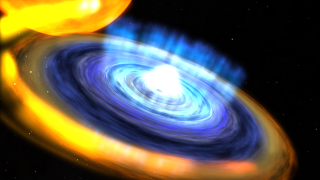RXTE Detects 'Heartbeat' Of Smallest Black Hole Candidate
Named IGR J17091-3624 after the astronomical coordinates of its sky position, the binary system pairs a normal star with a black hole that may weigh less than three times the sun's mass, near the theoretical boundary where black-hole status first becomes possible. Flare-ups occur when gas from the normal star streams toward the black hole and forms a disk around it. Friction within the disk heats the gas to millions of degrees, which is hot enough to radiate X-rays.
The record-holder for ubiquitous X-ray variability is another black hole binary named GRS 1915+105. This system is unique in displaying more than a dozen highly structured patterns — typically lasting between seconds and hours — that scientists distinguish by Greek-letter names. Seven of these patterns are now seen in IGR J17091, including the so-called rho-class oscillations that astronomers describe them as the "heartbeat" of black hole systems.
It's thought that strong magnetic fields near the black hole's event horizon eject some of the gas into dual, oppositely directed jets that blast outward at nearly the speed of light. The peak of its heartbeat emission corresponds to the emergence of the jet. Changes in the X-ray spectrum observed by RXTE during each beat in GRS 1915 reveal that the innermost region of the disk emits enough radiation to push back the gas, creating a strong outward wind that staunches the inward flow, briefly starving the black hole and shutting down the jet. This corresponds to the faintest emission. Eventually the inner disk gets so bright and so hot that it essentially disintegrates and plunges toward the black hole, re-establishing the jet and beginning the cycle anew.
In GRS 1915+105, which at 14 solar masses is by for the more massive of the two, this cycle can take as little as 40 seconds. In IGR J17091, the emission can be 20 times fainter than GRS 1915, and the heartbeat cycle can occur up to eight times faster.
Download the animations here.
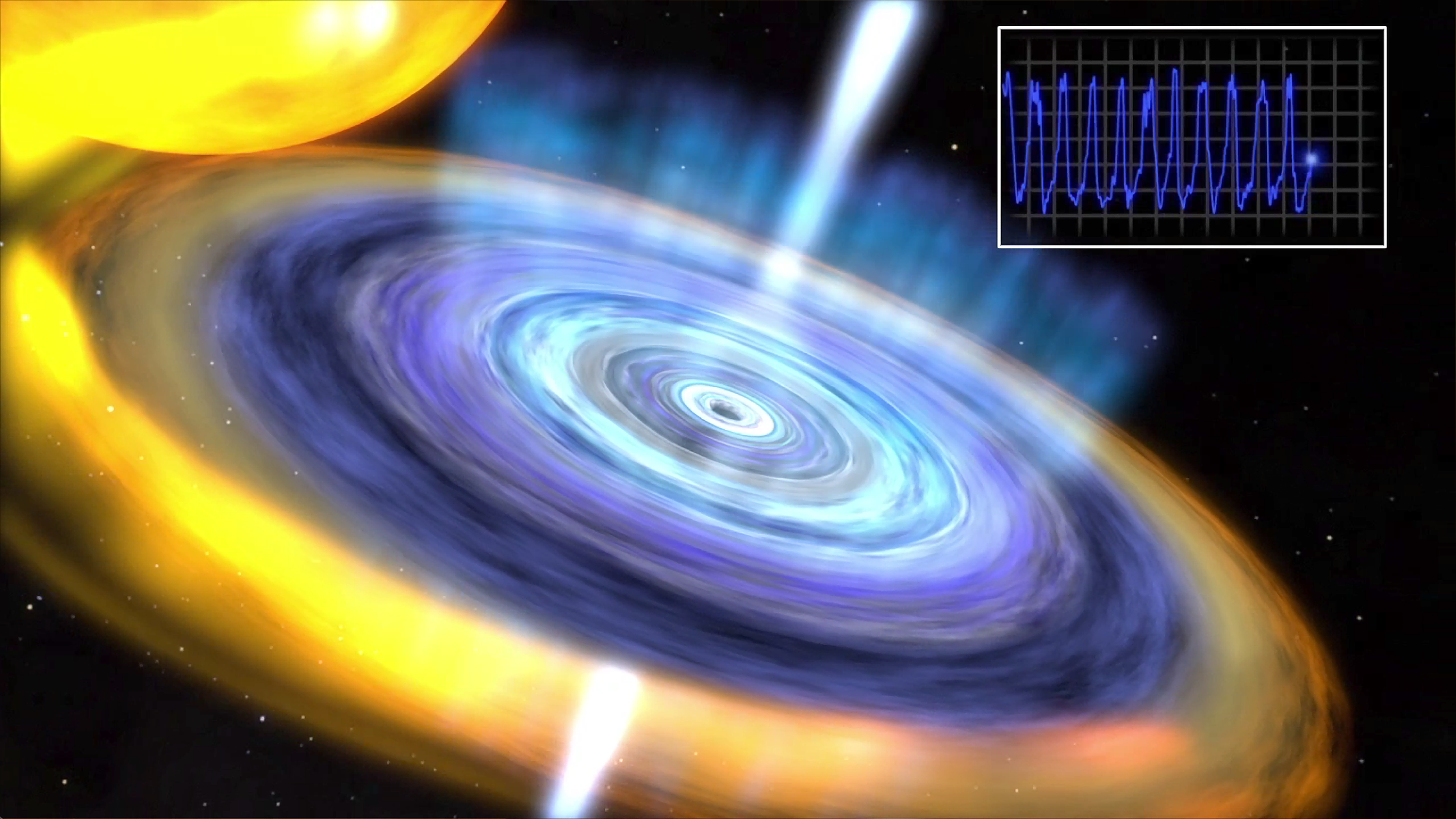
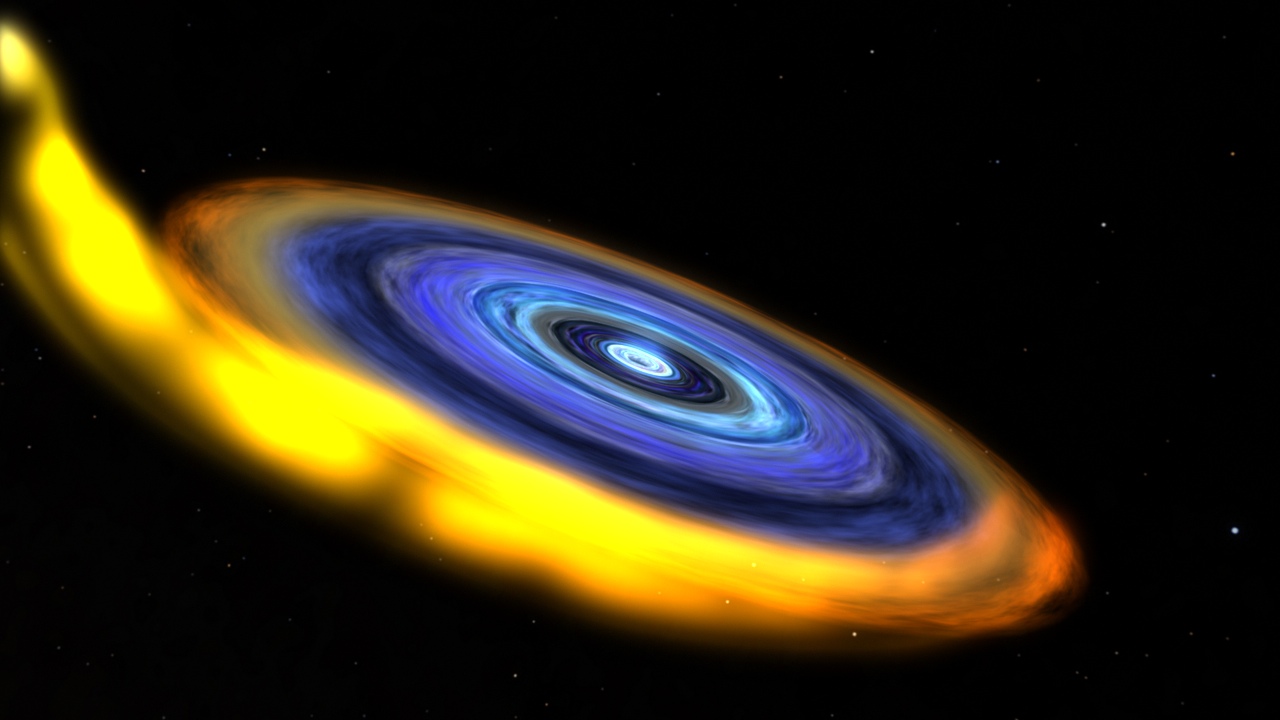
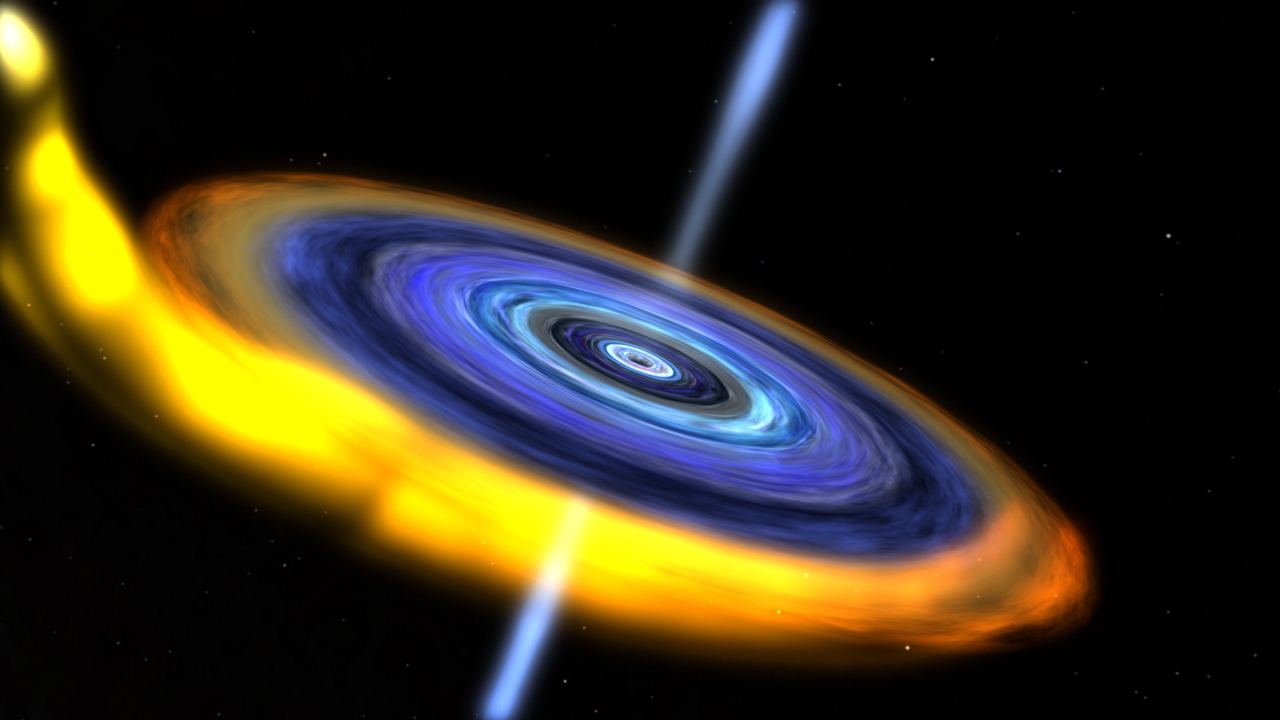
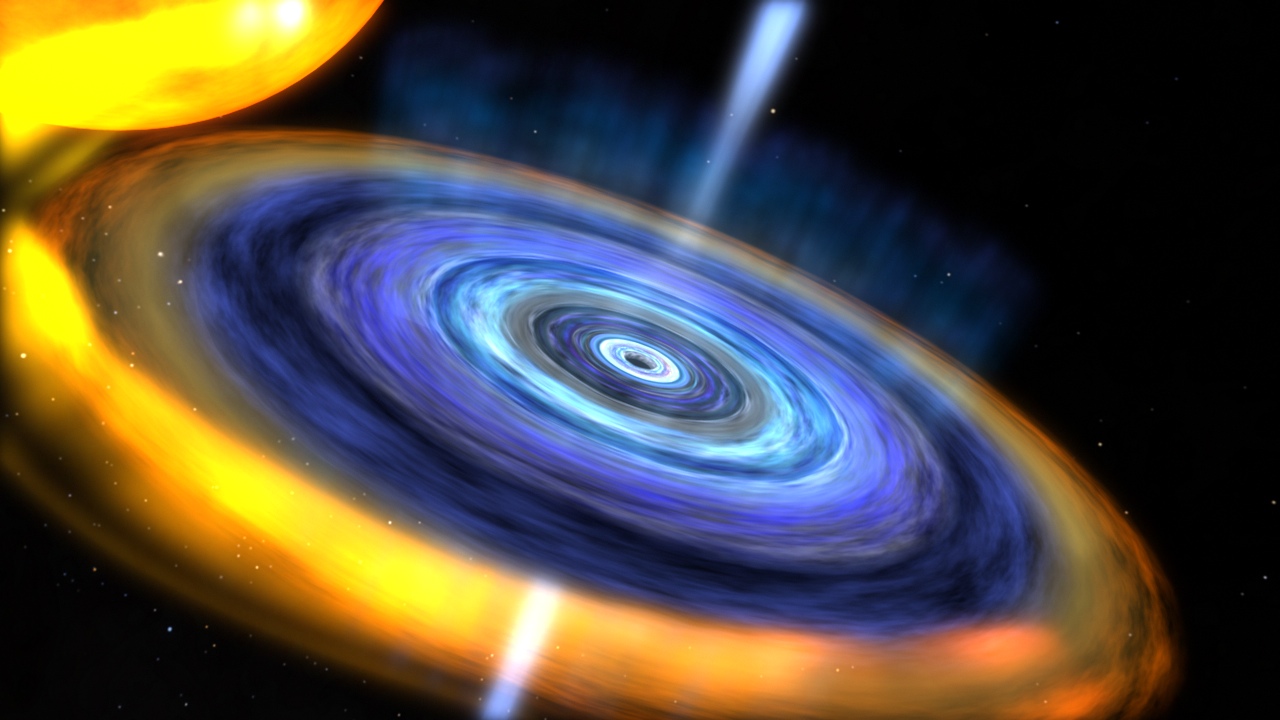
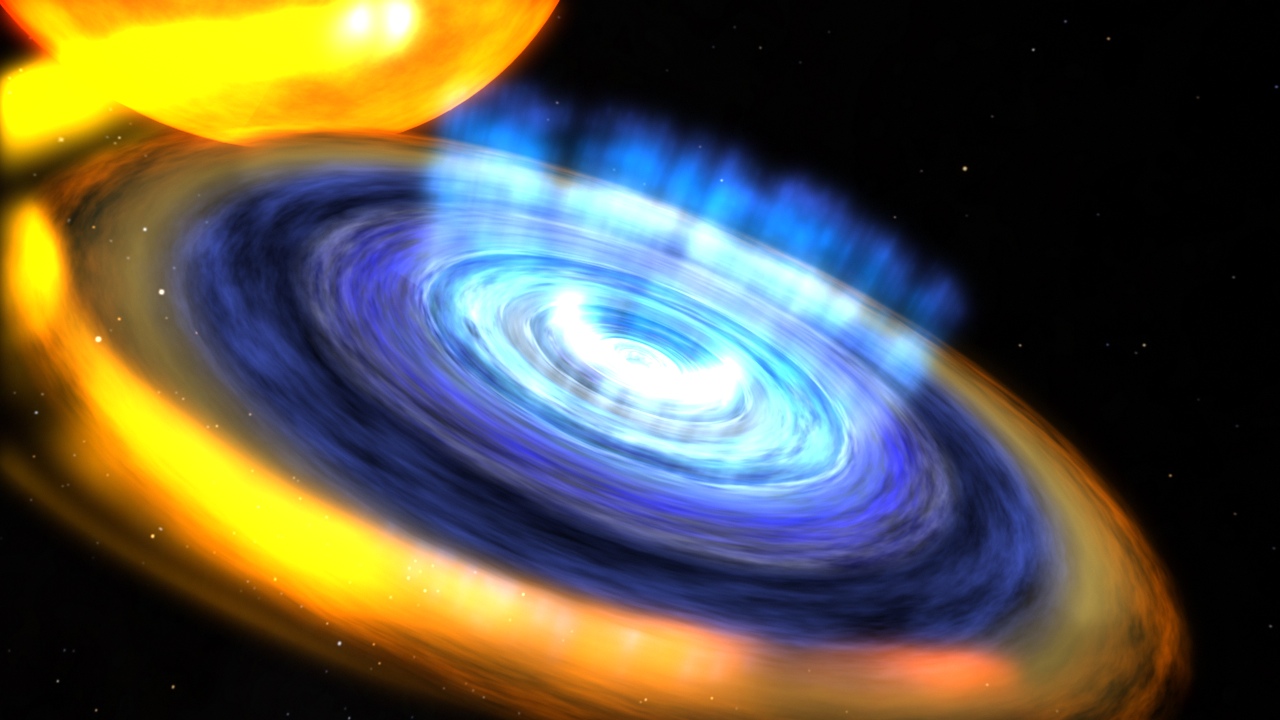
Related
For More Information
Credits
Tyler Chase (UMBC): Animator
Scott Wiessinger (USRA): Video Editor
Scott Wiessinger (USRA): Producer
Francis Reddy (Syneren Technologies): Writer
NASA/Goddard Space Flight Center/CI Lab
https://svs.gsfc.nasa.gov/10875
Mission:
RXTE
This item is part of this series:
Narrated Movies
Goddard TV Tape:
G2011-124 -- Black Hole Heartbeat
Keywords:
SVS >> HDTV
SVS >> Music
SVS >> Satellite
SVS >> X-ray
SVS >> Black Hole
SVS >> Astrophysics
SVS >> Edited Feature
SVS >> Space
SVS >> Binary Star
SVS >> Star
SVS >> Space Science
SVS >> RXTE
NASA Science >> Universe
